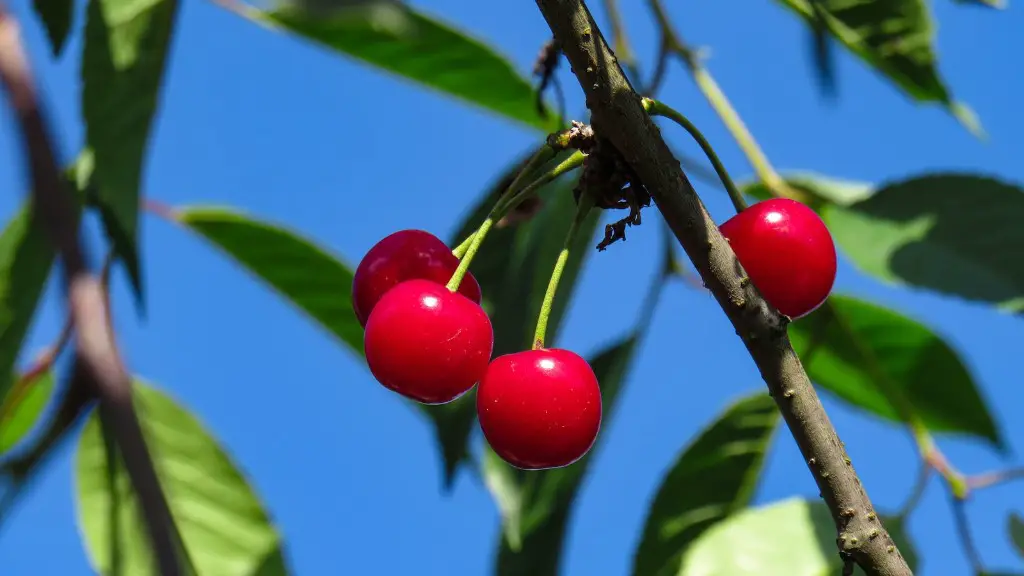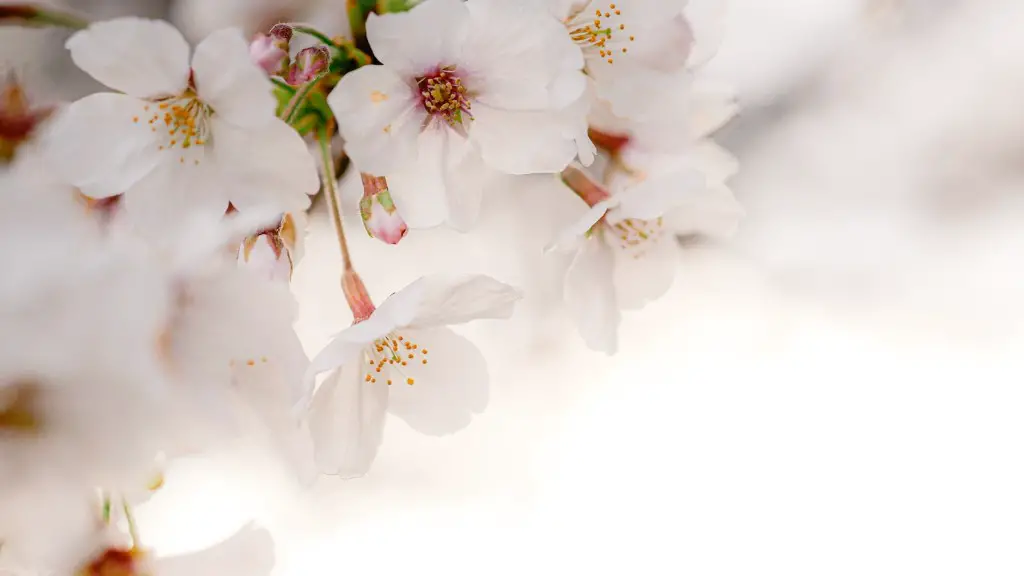Where Can You Grow a Cherry Tree
The cherry tree is a classic addition to any orchard, and is a highly popular tree in all parts of the world, thanks to its delicious fruit and beautiful foliage. The cherry tree is a fast-growing, deciduous tree, usually maturing between 15 and 25 feet tall, making it an ideal choice for a home orchard. There are a variety of cherry tree types, each offering different qualities and advantages.
When it comes to picking the best cherry tree type for your orchard, location is key. The best type of cherry tree for your area will depend on the climate and seasons. Most types of cherry tree require cold winter temperatures for the tree to become dormant and then later sprout in spring. Therefore, some types of cherry tree may not be suitable for warmer climates.
Ideally, cherry trees should be planted in a sunny location, with well-draining soil. This will ensure that the tree gets adequate sunlight for photosynthesis and that excess water does not drown the tree’s roots. If you live in a cold climate, a sheltered location may also be beneficial, to provide the tree with some access to warmer air. Ideal temperatures for cherry tree growth range between 65 and 75 degrees Fahrenheit.
When choosing a cherry tree for your orchard, the tree’s rootstock is also an important consideration. Rootstock is the type of rootstock the tree is grafted onto, as some rootstocks are either disease-resistant or hardier in certain climates. Choosing a rootstock that is suitable for your area will increase the likelihood of your cherry tree thriving.
One important consideration for growing cherry trees is the space required for growth. Since cherry trees can reach heights of up to 28 feet with a spread of up to 17 feet, you will need to give adequate space for the tree’s growth. It is advisable to plant cherry trees at least 14 feet apart from one another, to reduce competition for water, nutrients and sunlight.
Cherry trees require regular pruning and prune in mid-summer, to limit their growth and shape the tree. Pruning should be done about one to two times each year, during June and July. Pruning removal during this time will ensure the tree’s growth is kept in check and the foliage stays healthy.
Fertilizer may also be necessary for cherry tree growth, as the tree’s demand for nutrients increases as it grows older. Ideally, fertilize your cherry tree in the late winter or early spring, when the tree starts to sprout. Applying a fertilizer suitable for your specific tree type will protect and promote its growth.
Companion Planting
Choosing companion plants when you plant your cherry tree can be a beneficial way to help the tree thrive. Planting particular herbs and flowers in the vicinity of the tree can attract beneficial pollinating insects, protect against disease and reduce the tree’s vulnerability to pests. Examples of companion plants include French marigolds, chives and borage.
One type of companion plant that should be avoided around cherry trees, however, is black walnut trees. This species of tree releases a chemical which is toxic to other plants, so growing it too near to your cherry tree could damage or even kill it.
Cherry Tree Watering
Watering your cherry tree is also important, as it helps to keep the soil healthy and prevent the tree from becoming stressed due to dry conditions. Cherry trees require an inch of water every week, usually given in one session. During windier or hot weather, it is advisable to water the tree more frequently, as this will prevent the tree from becoming dehydrated.
Knowing when to water a cherry tree can be tricky, however, as too much or too little water can be bad for the tree. To work out the best watering methods, experts recommend checking the soil around the tree. If the top few inches of the soil is dry, then it’s likely the tree needs to be watered.
Cherry Tree Pruning
Pruning your cherry tree is also essential, as this will help to ensure that your tree remains healthy and produces abundant fruit. Pruning or trimming is best done after the flowering period has ended, as this is when the tree is not receiving so much energy and nutrients. It is generally recommended to prune the tree back to 25-30% of its height and width.
When it comes to actually pruning the cherry tree, it’s best to only trim branches that are either dead, diseased or damaged. Pruning cherry trees should not be overdone, as this may weaken the tree’s structure and make it less productive. With this in mind, every cut should be well-thought-out and purposeful.
Harvest and Storage
Cherry trees usually take between three and five years until they are ready to harvest. The best way to check when your tree’s cherries are ripe is to taste one. When picked too early, the cherries will have an acidic taste; when ripe, they should have a sweet flavor. Be careful not to over-harvest the tree, as this can reduce the number of fruits it can produce the following year.
Once picked, cherries must be stored correctly, as they have a short shelf-life; they can last between one and three days in the refrigerator. If you need to store the cherries for longer periods of time, it is possible to freeze or dry them. Freezing cherries can help to keep them fresh for up to a year, although they may develop a different texture, and air-dried cherries will last for about four months in an airtight container.
Pests and Diseases
Cherry trees are generally quite robust and robust and so do not require a lot of pest and disease control. However, there are some common pests and diseases that can affect cherry trees, such as powdery mildew, aphids, and leaf spot. If you discover any of these pests or diseases on your cherry tree, you should apply an appropriate pesticide or fungicide.
Again, companion plants can be beneficial in helping to control pests, as certain herbs can act as a repellent such as lavender and rosemary. Additionally, good hygiene practices, such as removing dead leaves and branches, can help to reduce the risk of pest or disease outbreaks.
Planting and Transplanting Cherry Trees
When planting or transplanting cherry trees, it’s best to do so during early spring or fall, while the tree is dormant. This will reduce the shock and stress the tree experiences when being transplanted. During the planting process, be sure to gently loosen the tree’s roots if you are planting a young tree and then water well afterwards. Mulching the tree afterwards can also be beneficial, as this will help to keep the soil moist and prevent weeds from taking over.
The planting site should also be considered when planting a cherry tree, as this can dramatically affect the tree’s development. Before settling on a location for your cherry tree, consider sun and shade patterns, soil type, and drainage. The soil should be well-draining, with a pH of 6.0-6.7, and the site should be sheltered from harsh winds and extremes temperatures.
Cherry Tree Care and Maintenance
Cherry trees require regular maintenance and care, just like any other fruit tree. This includes tasks such as pruning, fertilizing and checking for pests and diseases. It’s also important to keep your cherry tree well-watered, as this helps to keep the tree healthy and helps to produce the best quality fruit.
One important factor to consider is the type of fertilizer you use. If a general-purpose fertilizer is used, this will usually not provide enough nutrients for the tree and may result in a nutrient deficiency. It’s best to use a specialized cherry tree fertilizer, as this will provide the necessary nutrients for the tree’s growth and fruiting.
In addition, it is also essential to monitor the growth of your cherry tree and prune any excess branches that do not provide fruit. If any of the branches become too large or potent, it may be necessary to reduce them to ensure that the tree remains healthy and productive.



